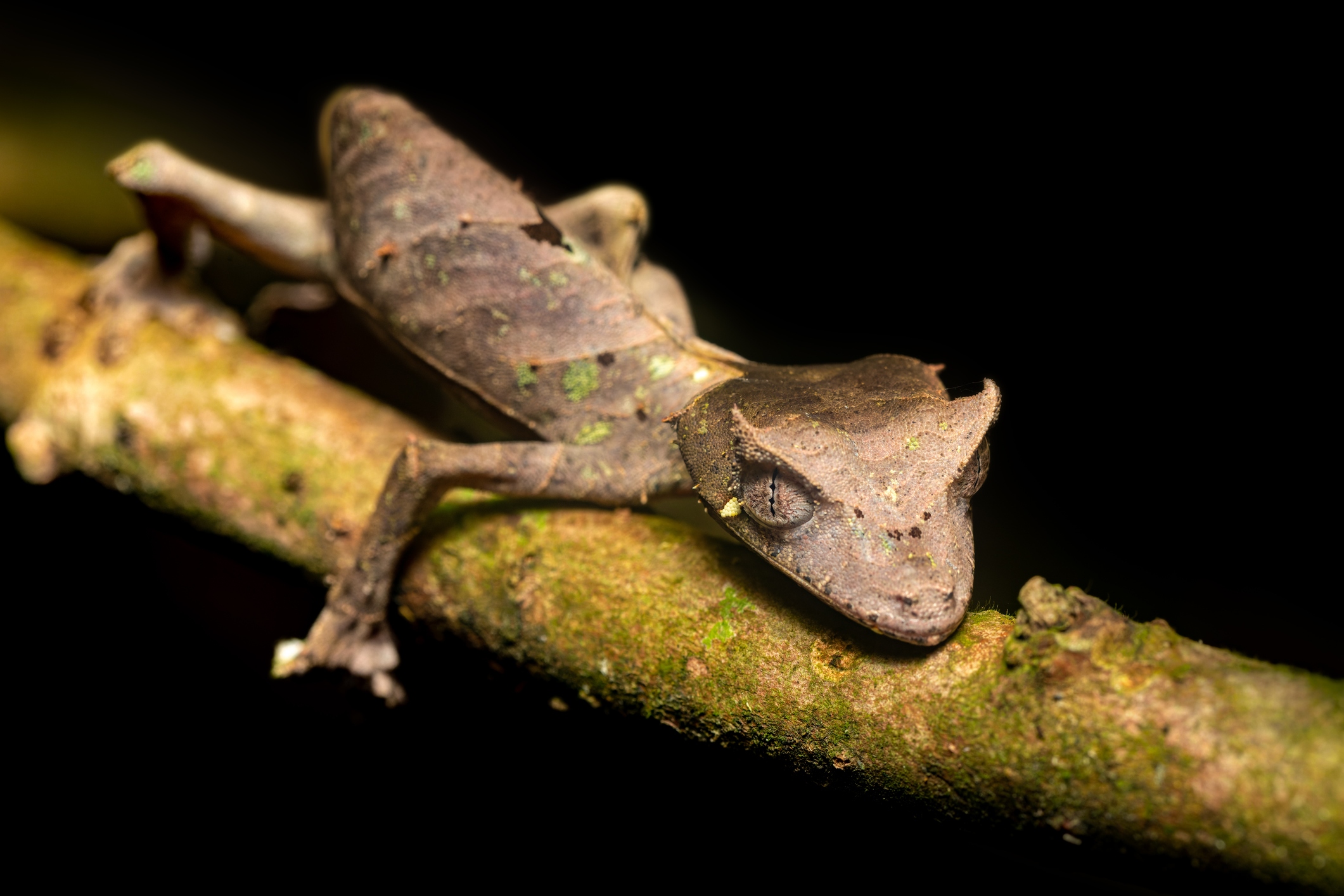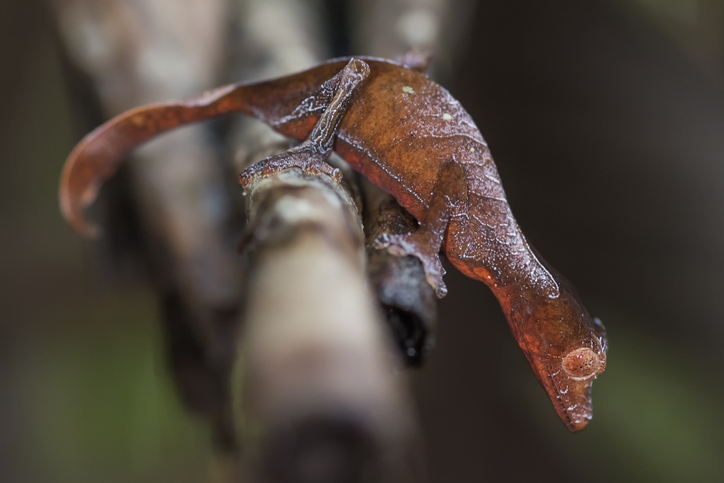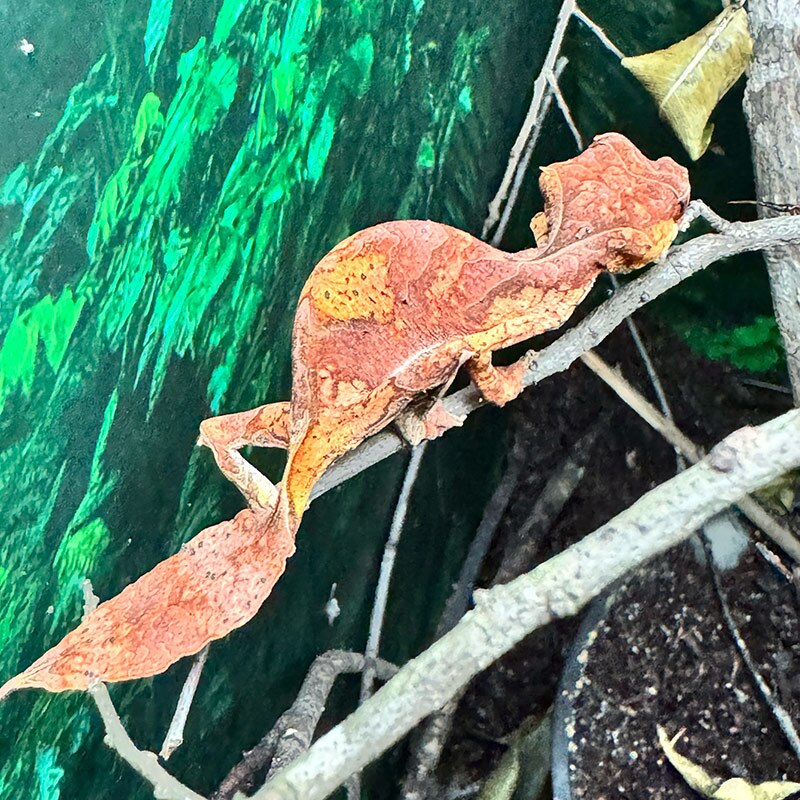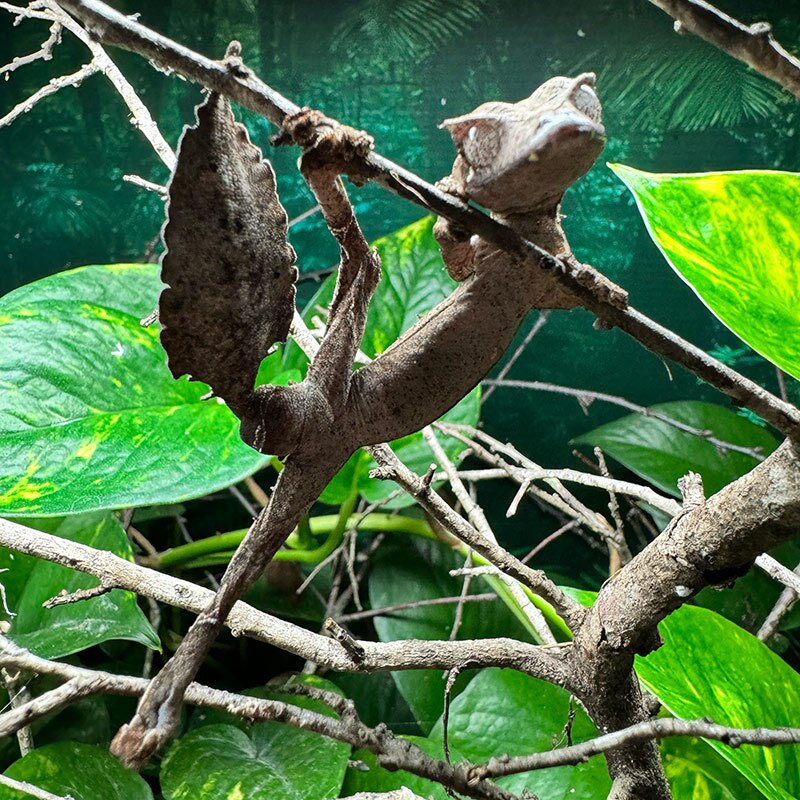
learn about these amazing little geckos from Madagascar
Welcome to our comprehensive guide on the Satanic Leaf-Tailed Gecko, also known by its scientific name, Uroplatus phantasticus! If you’re fascinated by the exotic world of geckos, you’re in for a treat—this species is one of the most unique and captivating reptiles you’ll ever encounter. With their incredible camouflage, resembling dead leaves, and their mystifying appearance, Uroplatus phantasticus is truly a marvel of the animal kingdom.
Whether you’re just considering adding one to your collection or you’re an experienced breeder, this guide will cover everything you need to know about their care, husbandry, and breeding. We’re excited to take you on a journey into the world of these elusive geckos and share expert tips to help them thrive in captivity. Let’s dive in and explore the secrets of the Satanic Leaf-Tailed Gecko!

Is Uroplatus phantasticus right for you?
Deciding whether keeping a Satanic Leaf-Tailed Gecko is right for you depends on several factors related to their care, environment, and your commitment level.
The Satanic Leaf-Tailed Gecko tends to be one of the more fragile species to work with within the Uroplatus genus. We often tell people they’re a reptile, for which you don’t get to make many mistakes. This means that you should not entertain adding a phantasticus to your collection unless you can give them the correct husbandry requirements. Don’t make the mistake of thinking that you’ll ‘figure it out.’ You’ll find yourself with a dead gecko, which wasn’t cheap to purchase.
While it isn’t impossible to start keeping Uroplatus with phantasticus, we don’t recommend it. We’d recommend that you start with a bit more forgiving species, such as Uroplatus ebenaui.
Creating the right enclosure for your Satanic Leaf-Tailed Gecko is essential for their health and well-being, as these geckos are sensitive to their environment. A vertical terrarium is ideal for Uroplatus phantasticus, as they are arboreal and spend almost all their time in the branches. A suitable enclosure size for a single adult Phant would be around 18x18x24 inches (45x45x60 cm), which provides enough vertical space for climbing and exploring. If you plan to house multiple Phants in the same enclosure, increase the enclosure size to give each one plenty of space to avoid stress or competition. In our facility, we keep our Satanic Leaf-tails in 22x17x36 inch enclosures. Hatchlings are kept in the 6 Enclosure Condo from Tamura Designs.
Decorating the enclosure to mimic their natural habitat in the rainforests of Madagascar is crucial. Live plants such as ficus benjamina, pothos, or even bromeliads help create hiding spots and maintain humidity. We especially like a combination of a few small benjaminas and pothos growing up through the branches.
Adding branches and vines will provide the climbing opportunities they need and plenty of camouflage to help them feel secure. These geckos are masters of disguise, blending seamlessly into their environment, so creating a lush, naturalistic enclosure will make them feel more at home. Be sure to include enough hiding spots to allow them to stay out of sight during the day.
Since Uroplatus phantasticus are sensitive to heat, ensure that the enclosure temperature remains between 74-76°F (18-24°C) during the day and cooler at night (mid-60s), avoiding high temperatures that could stress them.
Proper humidity levels are critical to keeping Satanic Leaf-tailed Geckos. They are native to the humid rainforests of Madagascar, and you’ll need to recreate this aspect of their habitat in captivity. The good news is that maintaining proper humidity isn’t difficult if you do your homework and pick up a few critical pieces of equipment.
For Uroplatus phantasticus, humidity should be kept between 60-100%, depending on the time of day and the seasons. To get right down to it, these are the parameters we use for maintaining our breeding colony:
Breeding Season
During the breeding season, we maintain higher humidity levels to replicate the conditions that plants encounter in the wild. This means higher humidity and more frequent mistings.
During the daytime, we keep our facility at 60-70% humidity. It is important to drop the humidity levels for your Leaf-tails during the day because not only does this mimic nature, but you want your enclosures to dry out during the day. If this doesn’t happen, you’ll deal with mold, fungus, and possible health problems with your geckos.
At Night, we’ll increase the humidity levels to as close to 100% as possible. Usually, when we walk into the facility in the morning, we see the humidity levels at around 97% – 100%. When the lights come on, the Hydrofoggers go off. Over the course of the next hour or two, we’ll see the humidity levels gradually drop into the 70% range. As the day continues, the humidity levels will usually either stay in the low 70’s or even drop into the high 60’s. This is exactly what we want to see.
We also added an additional misting session from our Mistking systems during the breeding season. The misting system will still go off right after the lights go out and right before they come on, but we’ll add a third misting session at night at 2 a.m. and a fourth misting session at 2 p.m. Each of these misting sessions lasts between 30 seconds and 90 seconds. In total, our misting systems are running for 4 minutes each day.
The Dry Season
During the dry season, when the Phatasticus are not breeding, we’ll aim for slightly lower humidity levels and fewer misting sessions. We’ll aim to get our humidity levels to around 85% during the night. We achieve this by simply allowing the Hydrofogger to run for less time. We’ll also remove our 2 a.m. misting session and the 2 p.m. one. Because we’re allowing our misting systems to run for less time, the daytime humidity levels will almost always be around 60%.
Though Satanic Leaf-tailed Geckos are nocturnal, UVB lighting is still important for their health, as it helps with calcium metabolism and overall well-being.
Here at our Uruplatus facility, we use a low-intensity UVB bulb. While there are many brands you can choose from. we use Arcadia 6% T5 UVB light exclusively. The 6% UVB bulb will provide the right amount of exposure without overwhelming them.
When discussing lighting and UVB, we must reference another aspect of creating the perfect enclosure: plants. If you add live plants in the proper manner, you’ll be creating areas where your Gecko can move into the shade, limiting the ability of the UVB to hit your gecko. This allows your Leaf-tail to determine how much it exposes its body to the UVB light.
You should use a light cycle that mimics natural day and night patterns, with 13 hours of light and 11 hours of darkness during the summer wet season (breeding season). In the winter, we reduce this to 10 hours of light and 14 hours of darkness. The amount of daylight your Phantasticus receives helps signal what season it is to the Gecko and how they should behave.
In addition to the UVB light, we also use JungleDawn lighting from Arcadia. These are great lights to help illuminate your enclosure and help your plants grow. One thing we will caution you on with these lights is heat. While this LED fixture doesn’t generate much heat, it does. You’ll want to monitor the temperature inside smaller enclosures to ensure it doesn’t get too warm. While it isn’t horrible if the first inch or two of the enclosure is outside their preferred temperature range, you certainly don’t want the entire enclosure heated any warmer than 78 degrees for any significant amount of time.
Is your Satanic Leaf-Tailed Gecko a male female ?
Sexing your Leaf-tailed Gecko isn’t difficult. Often, we can sex our Phantasticus geckos right out of the egg. Below, you’ll find details about identifying male geckos and females. One word of caution, though: Many articles you read, and people you talk to will tell you that the differences between the sexes are absolute. This is not the case. Aside from hemipenal bulges in mature males, other identifying factors, such as the jagged tail or the white teardrop, can be present in both sexes. While they are certainly more common in male Satanic Leaf-Tailed Geckos, we have females in our facility who have those traits. We also have males that have smooth edges on their tail and no tear drop. So, don’t just assume!

It isn’t difficult to identify a female Uroplatus phantasticus. If you look at the accompanying photo, you’ll see that this gecko has a tail that has smooth edges. In addition, this female lacks the white teardrop mark that is typical of females. You’ll also notice a lack of spikes at the base of her tail. Last but not least, you’ll notice that she lacks the hemipenal bulge that mature males always have.

Male Satanic Leaf-tailed Geckos have many identifiers to help you determine whether your gecko is a male. In the photo, you’ll see a few key male identifiers. First, you’ll notice the large hemipenal bulge at the base of his tail. Mature males always have this bulge, making them easy to identify. Secondarily, you’ll see that the edges of his tail are more jagged, almost looking like a leaf that a bug has chewed on. In addition, you’ll notice those small spikes at the base of their tails. Lastly, you’ll see a white marking by his eye that almost looks like a teardrop. These are all signs that your Satannic Leaf-tailed Gecko is a male. While the hemipenal bulge will only be found in males, it is possible to hatch out females with the jagged edges of their tails. So, don’t assume the sex of your gecko on those factors alone.

So, you’re thinking about buying a Satanic Leaf-tailed Gecko? Like many other people, you may be interested in finding a good breeder of these amazing Geckos to add some to your reptile collection. If so, we have a few pointers to help you find the right Phantasticus.
First, unless you’re an experienced breeder, do NOT buy a wild-caught Satanic Leaf-tailed Gecko. These Geckos are very fragile, even under good conditions. Wild-caught individuals will almost always be imported with heavy parasite loads. In addition, the stress of being caught in the wild and transported halfway around the Globe leads many of them to poor health. Combined with dehydration and malnutrition, these wild-caught Satanic Leaf-tailed Geckos are best left to experienced breeders who add them to their collections to increase genetic diversification in captive-bred populations.
Second, find a reputable breeder who has established themselves as someone who is trustworthy and consistently produces high-quality and healthy offspring. There are a few unscrupulous people who will sell wild-caught individuals as captive-bred. By working with a reputable breeder (Like us here at Nealon Reptiles), you’ll get exactly what you’re paying for. In addition, good breeders will be there to help you along the way should you need advice on giving your Phantasticus gecko the best life possible.
Third – don’t purchase a Satanic Leaf-tailed Gecko unless your enclosure for them is already set up and you have no issues providing them with the care requirements and environmental conditions they need to thrive. Don’t make the mistake of thinking that you’ll ‘figure it out later.’ There won’t be a later date as these geckos can quickly perish under less-than-ideal conditions.
How Much Does a Satanic Leaf-Tailed Gecko Cost?
Depending on a few factors, you should expect to pay anywhere between $800-$1,200 for a Satanic Leaf-tailed Gecko. Some of you may think this is a lot for a Gecko, and you’re not wrong. However, with the difficulties in establishing a breeding program and the high husbandry demands they require, the price is justified.